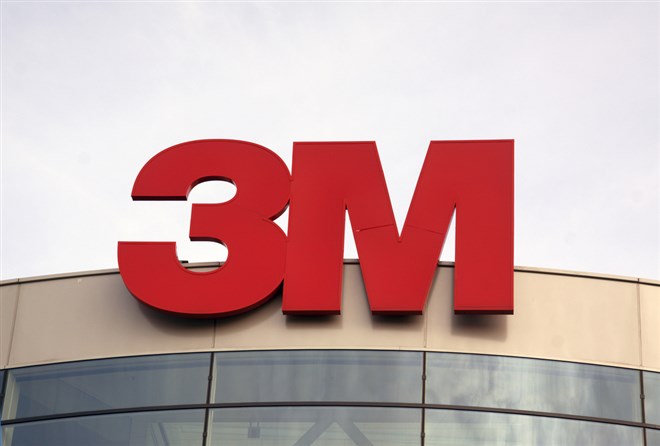
The 3M Company (NYSE: MMM) has paid a dividend for 99 years, with a dividend increase of 65 years — in the past five years, it has increased its dividend 14%. The industrial bigwig runs a slew of large businesses across a wide range of sectors.
From abrasives and finishing to auto body repair solutions to food safety indicator solutions and orthodontic solutions, its products total upwards of 60,000 products. Does 3M qualify as a quality passive income king for your portfolio?
Let's find out whether investing in 3M makes sense for your needs.
About 3M
3M was formed in 1902 when five founders planned to mine for corundum, a mineral ideal for making sandpaper. They later found that they had unearthed a mineral called anorthosite. The company was originally called Minnesota Mining and Manufacturing. In 1910, investor Lucius Pond Ordway moved the company from Duluth to the east side of St. Paul to start developing its full scope of products, including Scotch tape. 3M began paying dividends in 1916. The company became a multinational company in 1929 and its manufacturing operations are located throughout the world. The company operates in 70 countries and sells products in 200 countries.
Today, the 3M Company boasts four segments, from safety and industrial to health care and its products include:
- Safety and industrial: The safety and industrial division produces industrial abrasives and autobody repair applications, closure systems for personal hygiene products, packaging materials, electrical products, construction and maintenance materials, structural adhesives and tapes and shingle granules.
- Transportation and electronics: This division produces ceramic solutions, graphic films for advertising and fleet signage, electronics assembly solutions and reflective signage.
- Health care: The health care division produces food safety indicators, coding and reimbursement software, wound prevention products, dentistry and orthodontic products and more.
- Consumer: The consumer division produces a wide range of products, including bandages, consumer respirators, cleaning solutions, retail abrasives, car care products, consumer air quality solutions and more.
As of Q2 2022, the company had sales of $8.7 billion, down 3% year-over-year, including a 4% impact from foreign currency translation. The company also had an organic sales growth of 1%, which included a 4% decrease from COVID lockdowns and a decline in disposable respirator demand.
Operating cash flow was $1.1 billion, down 40%, and adjusted free cash flow was $1 billion, down 41%. However, 3M returned $0.8 billion via dividends to its shareholders. 3M reported adjusted earnings per share (EPS) of $2.48 in the second quarter.
The company has also worked to formulate multiple arms of the business, the most recent is the acquisition of LeanTec, for digital inventory management solutions for the automotive aftermarket segment. 3M also announced that it would also spin off its health care unit into a separate public company. The division was responsible for close to 25% of $35.35 billion in sales last year.
Pros and Cons of Investing in 3M
It's a good idea to take a look at the pros and cons of investing in 3M before you choose to invest in the company.
Pros
Let's take a look at some of the benefits of investing in 3M:
- Strong balance sheet: Despite economic headwinds, the company still has strong financials as indicated by gross profit and net income. Its product portfolio includes a focus on innovation including household names like Post-it, Scotch and Scotchgard
- Diversified markets: The company has a wide portfolio which allows it to handle many market challenges, including in its various channels.
- Dividend perks: The company isn't shy about sharing its dividends with shareholders. The 3M Board of Directors recently declared a dividend on the company's common stock — a total of $1.49 per share for Q3 of 2022. The dividend is payable September 12, 2022, to shareholders of record at the close of business on August 22, 2022. The company has offered a dividend for more than 100 consecutive years.
Cons
The cons include the following:
- Global challenges: Due to the cool-off of the global economy, supply chain constraints have worsened and staff shortages and patient cancellations have also challenged the makretfor 3M surgical products. Staff shortages and patient cancellations also affected health care products as well.
- Lawsuits: Over 288,000 plaintiffs have filed a 3M earplug lawsuit against 3M due to defective Combat Arms earplugs that induced hearing damage. The 3M earplug lawsuits have been consolidated into the largest “class action” MDL in history. The company commits to a $1 billion trust for compensation-related claims. 3M booked a pre-tax charge of $1.2 billion in the second quarter related to the expenses.
Should You Invest in 3M?
Shares in the mega industrial consumer continue to gain, including better-than expected Q2 earnings despite the spinoff of the multi-billion-dollar healthcare business. Though its sales of $8.7 billion were down year-over-year and the stock has lost approximately 14% of its value this year, the company still beat the $8.57 billion estimates.
Analysts have been mixed in their analysis of 3M stocks but they have reported better-than-expected earnings in Q2, despite the impending lawsuits on its combat earplugs and rising litigation costs.
Your decision to purchase 3M stock should be based on your risk tolerance, portfolio size, and personal goals. Keep in mind that your risk tolerance cannot always remain static. As your investment goals and age change, your risk tolerance may change as well.
It's healthy to review how you want to invest as your life progresses. Once you have a plan in place, consider stress-testing your plan. A financial planner can help you determine how your retirement planning holds up under specific life events based on your risk tolerance. It's a great idea to work with a retirement professional at least every five to 10 years and right before you retire so you know you're doing exactly what you should in order to retire the way you prefer. Whatever you do, make sure you never invest what you cannot afford to lose.